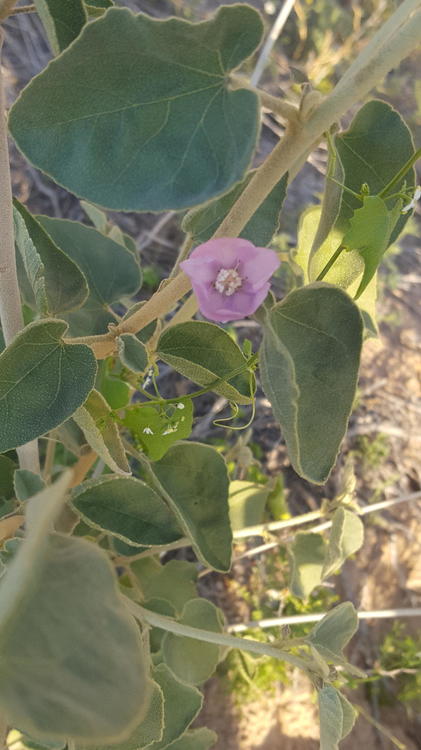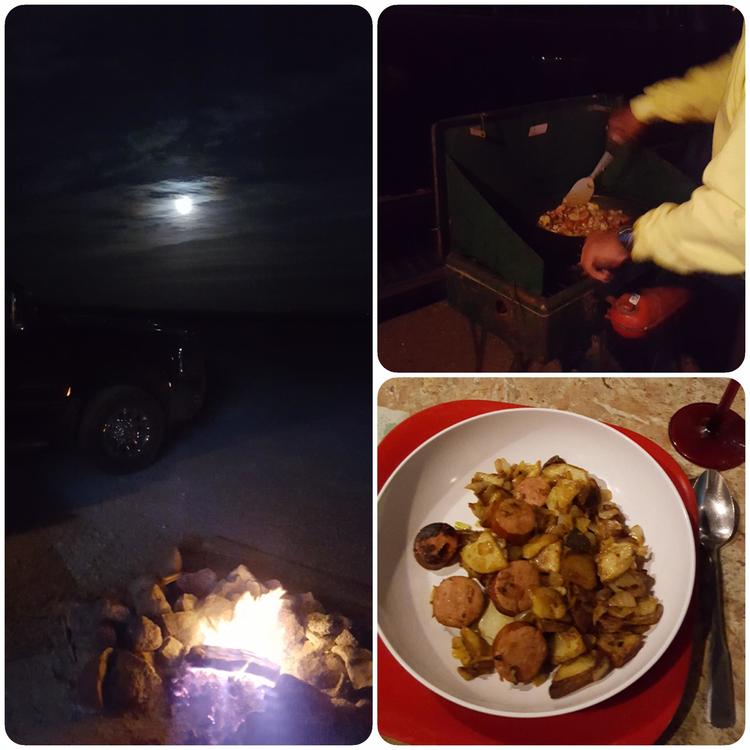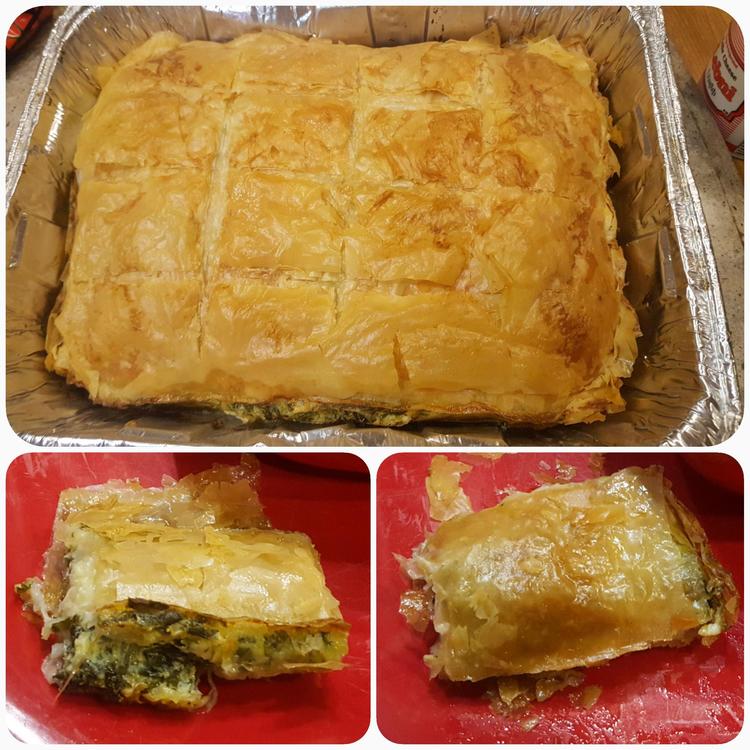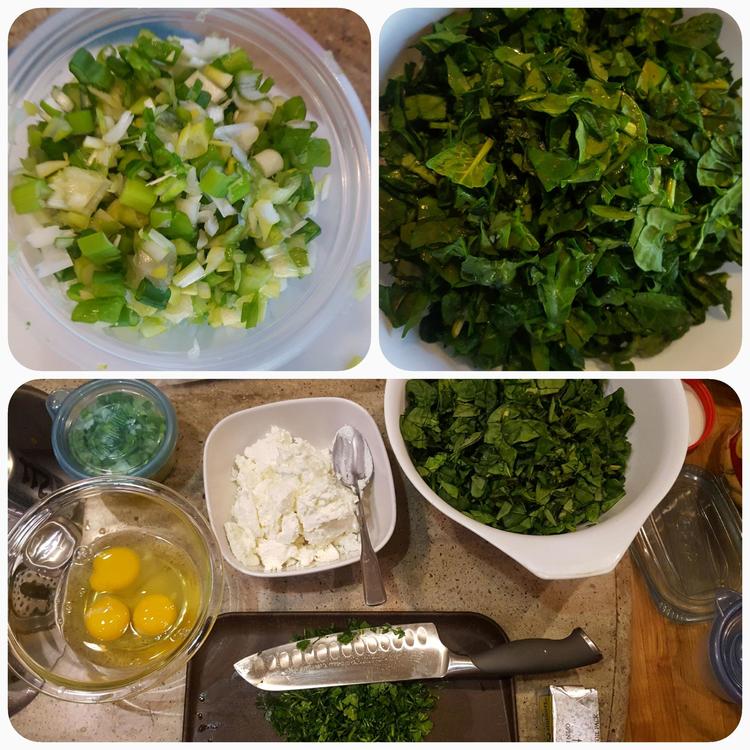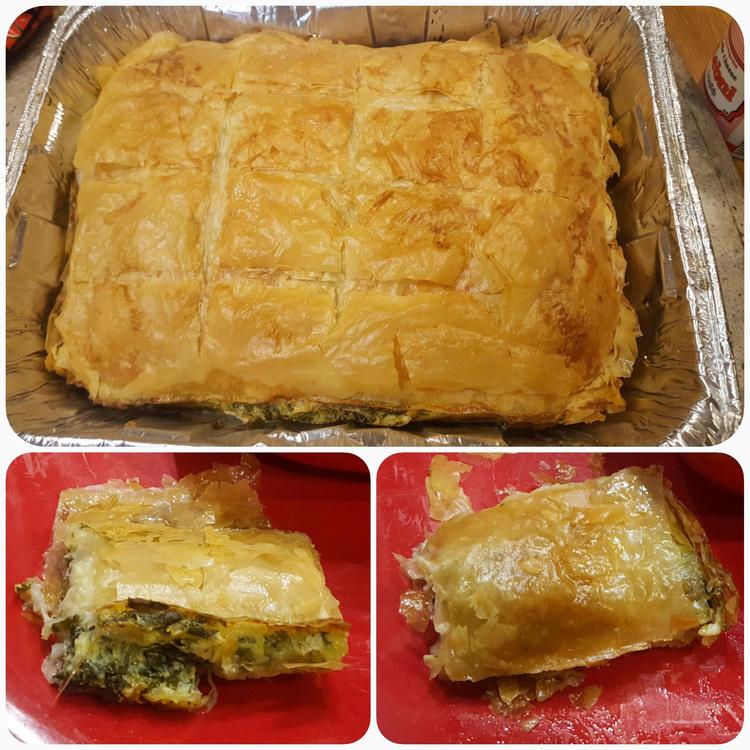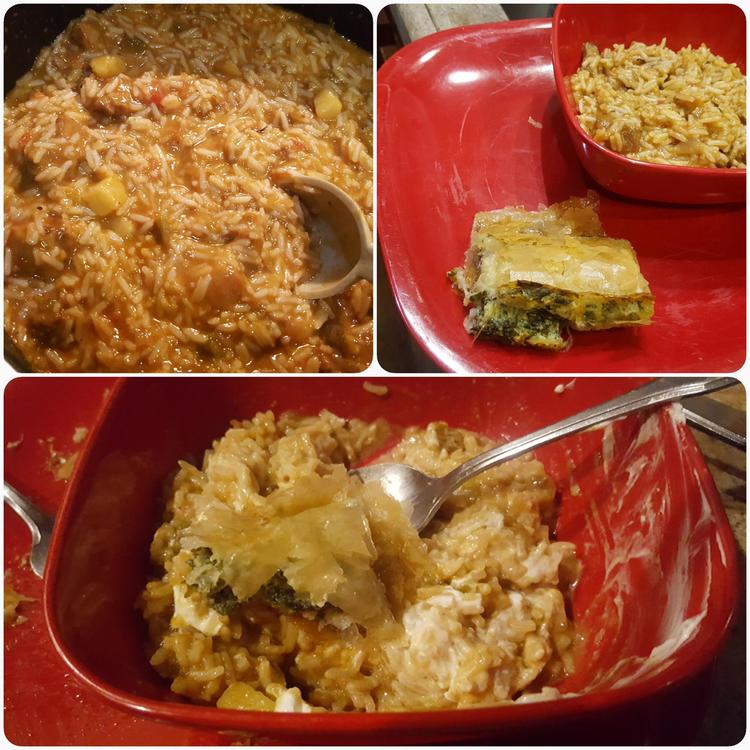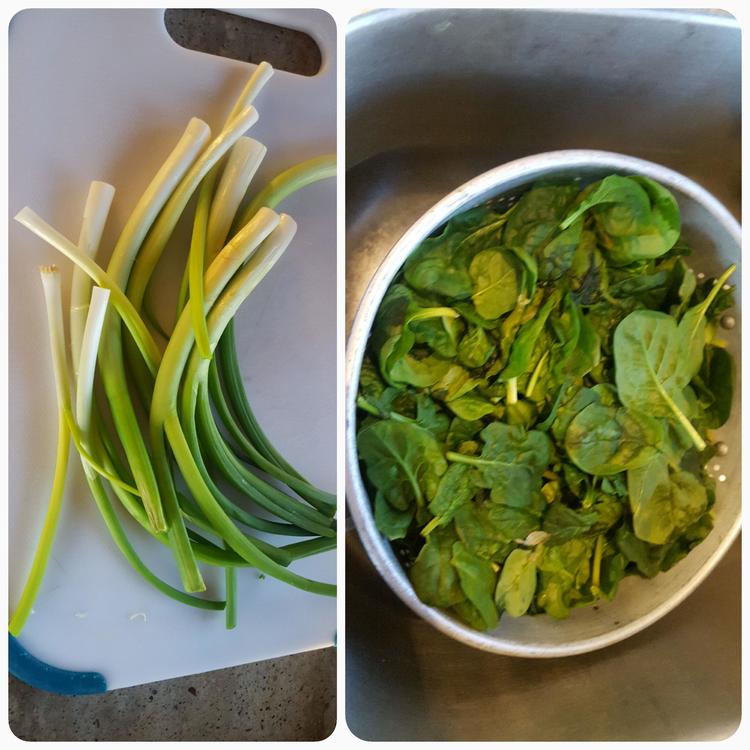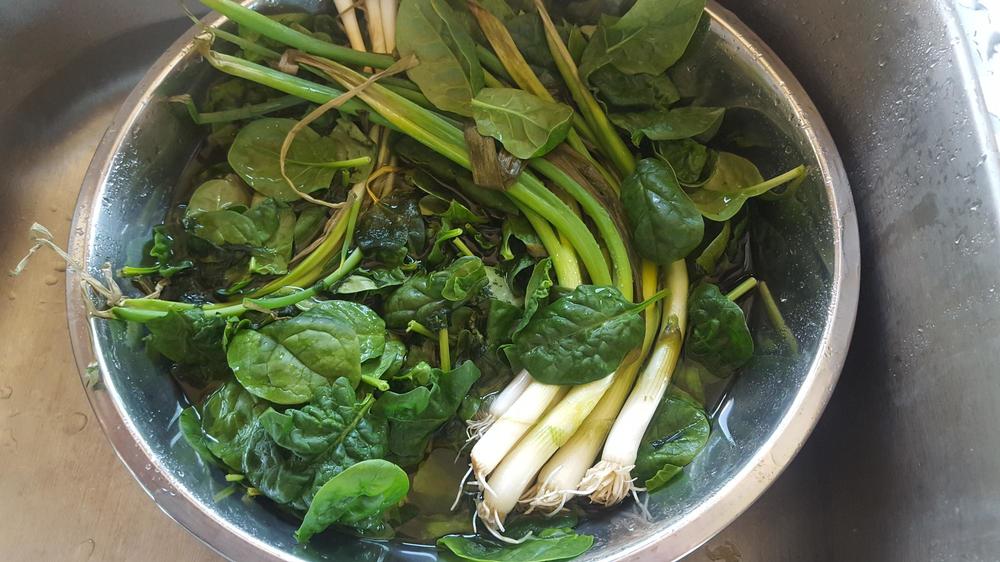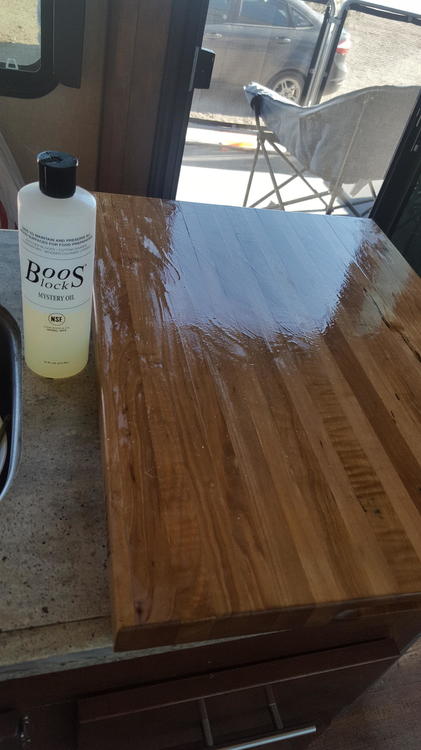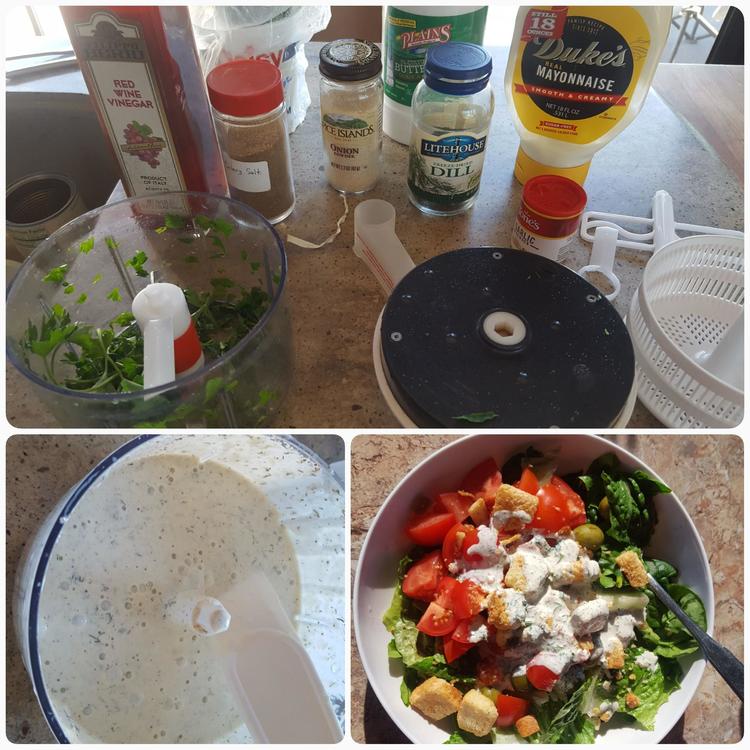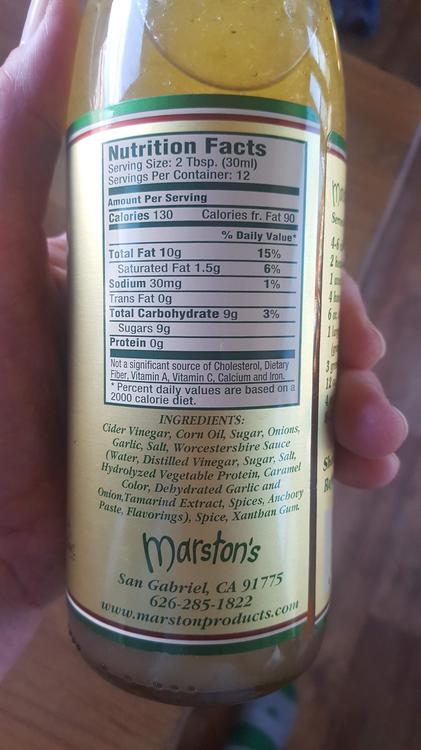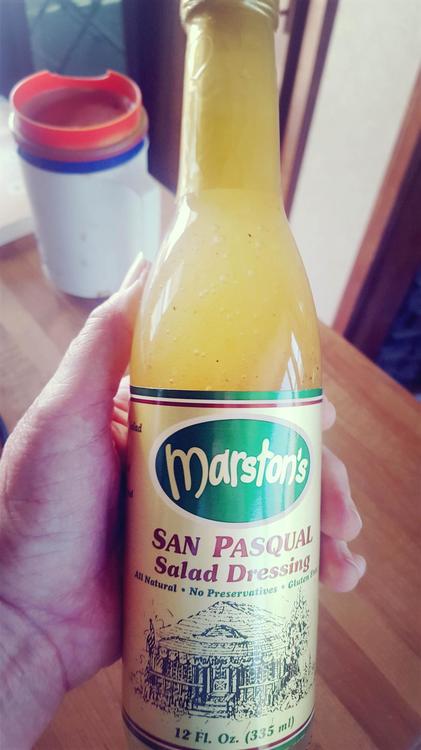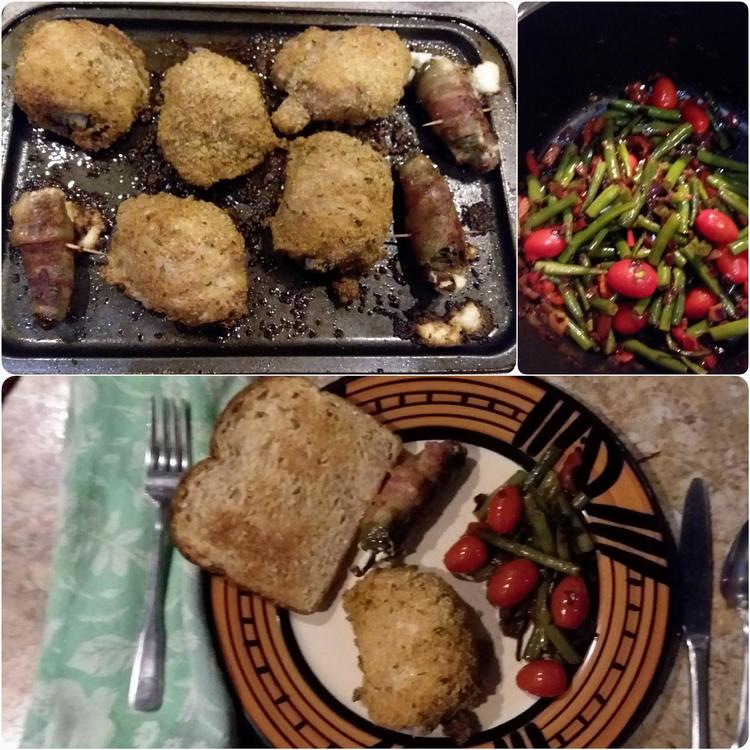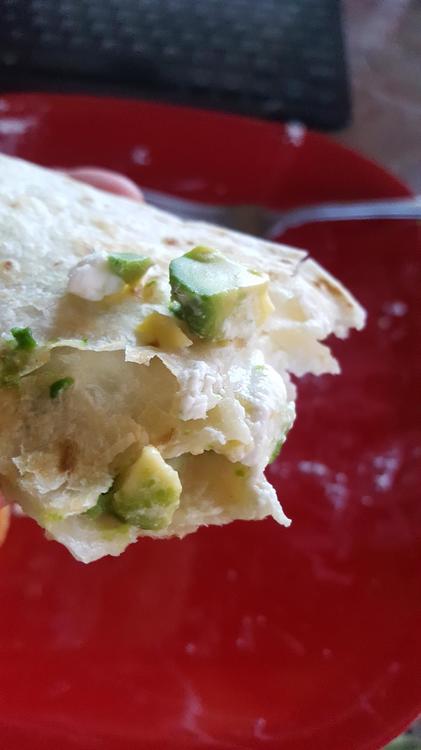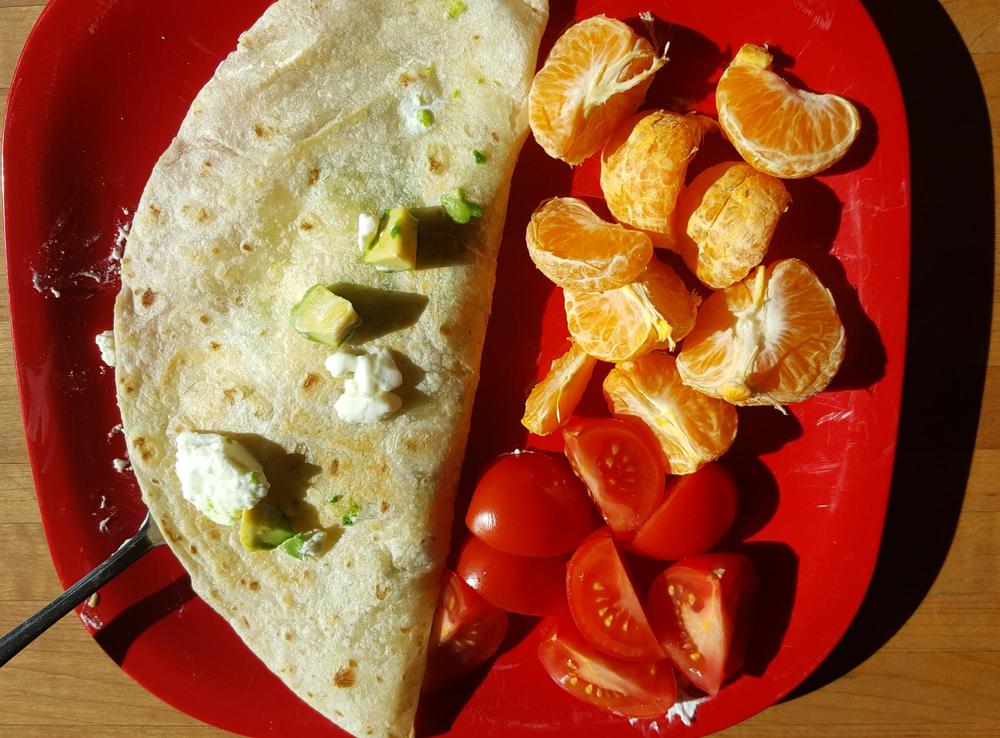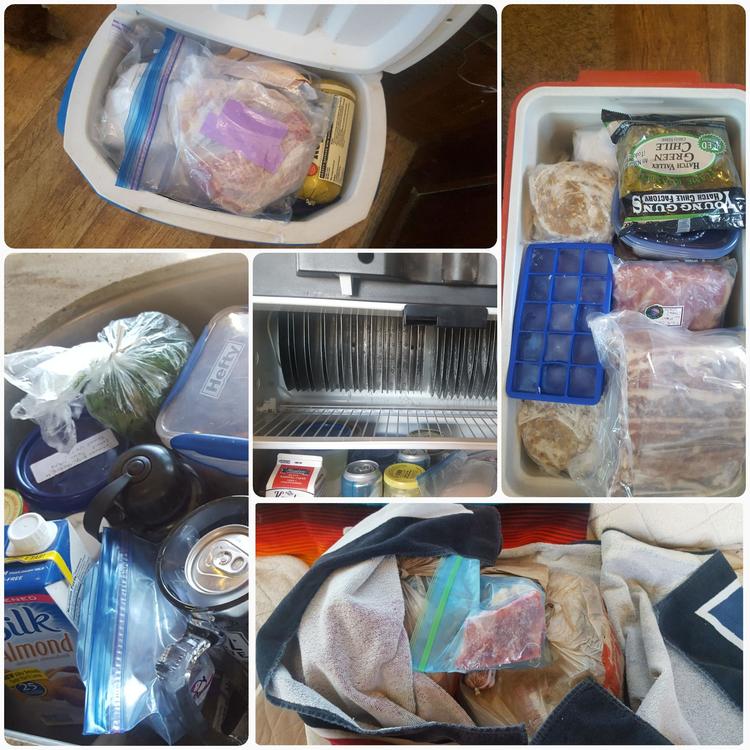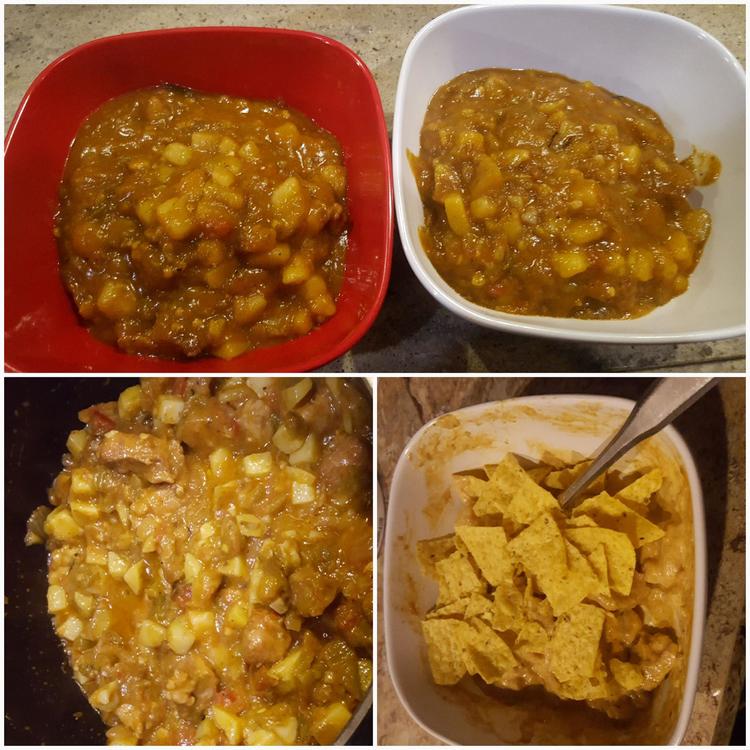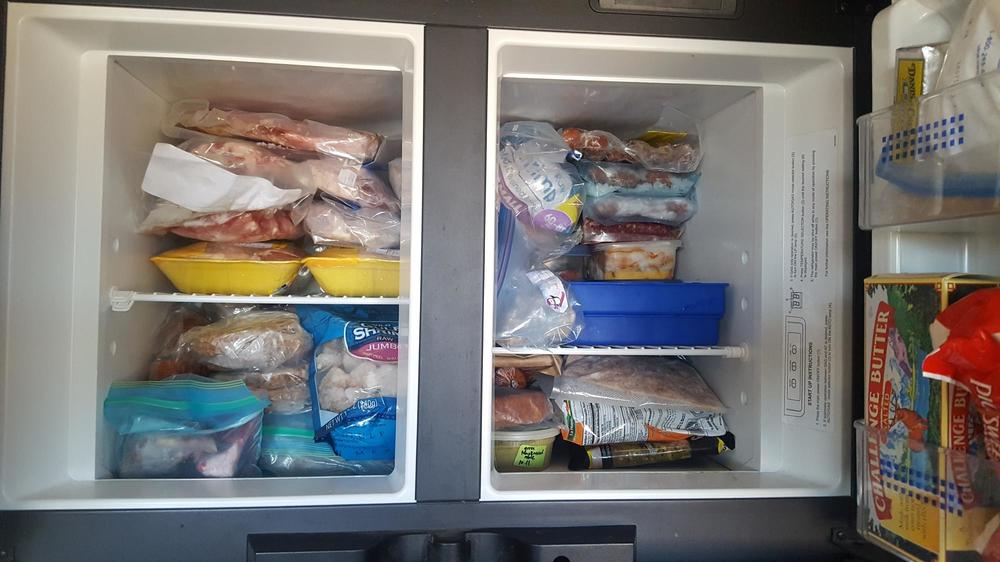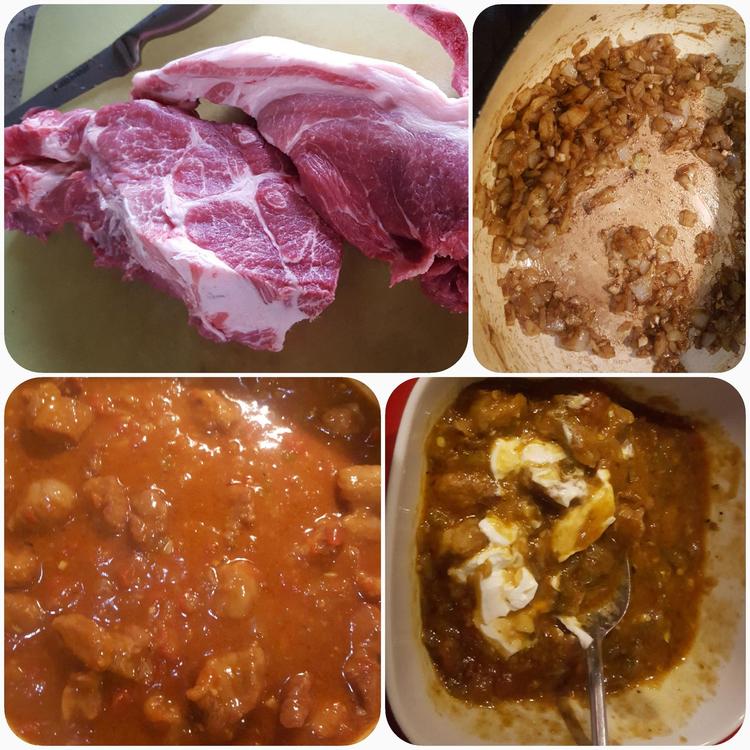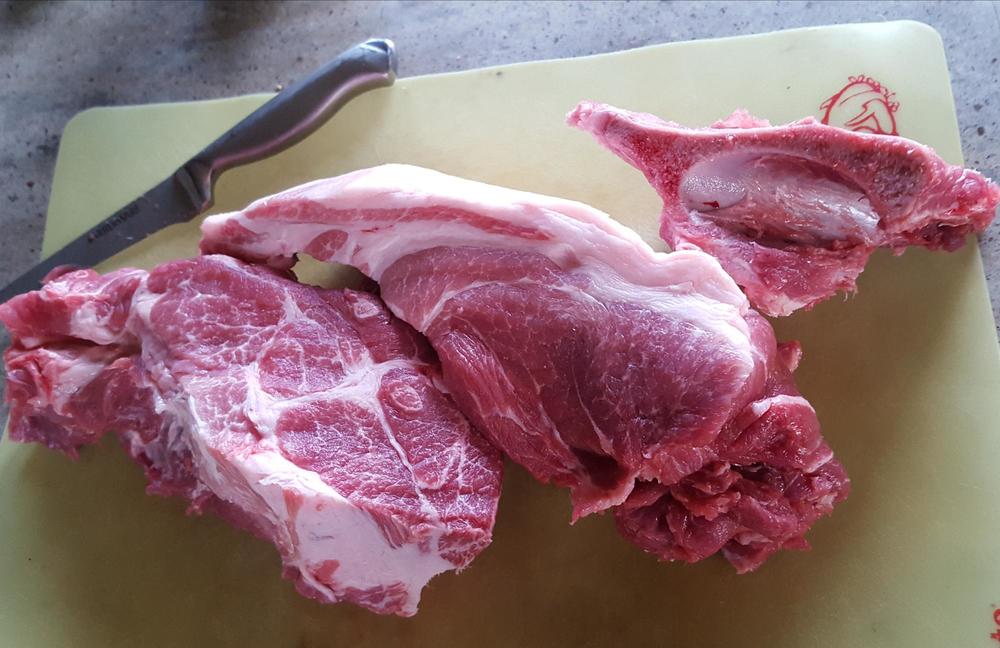-
Posts
13,573 -
Joined
-
Last visited
Content Type
Profiles
Forums
Store
Help Articles
Everything posted by Smithy
-
The clouds are gathering and there's rain in the forecast today and tonightt. It will be lovely if it happens, and we're planning a cool-weather inside dinner, probably pork roast. Yesterday, however, it was pleasant weather for walking and continuing our search for flowers. A nearby velvet-mallow has opened its first blossom. The velvet-mallows grow nearly to my height and can be pretty showy, for the desert, in a good year. Last night we sat out by the campfire and admired the moon, while he cooked hash. It's his kind of cooking: simple ingredients, simple methods, tasty and filling.
-
I made spanikopita the other day, and it was delicious. The top layers of phyllo were crisp and flaky, just the way I remember the dish from the last time I had it. I stored the leftovers in the refrigerator, covered. The next day they still tasted good, but the crisp top layers had turned soggy. This got me to thinking about other dishes that use phyllo: baklava, for instance. Surely it hasn't been made fresh that day, every time I've eaten it. Why does the crust stay crisp? How should I have stored that spanikopita? Since it has cooked egg in the filling I wanted it refrigerated, and the cookbook said to do so. More broadly, how does one store phyllo-based pastries to keep them crisp? Finally: once cooked phyllo has gone soggy, is there a way to make it crisp again?
-
Yes, I too liked Good Earth...both the restaurant and the tea. Thanks for the link to that tea.
-
Today the spanikopita still tastes good, but it is not as crisp as it was last night. Is there a way to crisp that phyllo again once it's gone soft from storage? Should I not have covered it in the fridge?
-
I mentioned a couple of posts ago that I had purchased spinach for the butter-poached shrimp and orzo recipe and gotten a reaction of revulsion to the idea from My Other Half. I still had to do something with it, and using it in salads wouldn't go quickly enough. I also had scallions just about past their best-by date. Before rinsing, sorting and trimming comes this picture o' shame: but here's what happened after: Makes a difference, doesn't it? Then I had to use them. I love spanikopita. I have never made it until yesterday. There was a box of filo / phyllo in the freezer and there are still boxes of Egyptian feta in the refrigerator. Is spanikopita considered a clean-out-the-fridge dish? Probably not, but it served that purpose yesterday and was a good exercise for me. He wouldn't have to eat it. "What's that?" he wanted to know. "Spanikopita!" I said. He tried a piece. He liked it! I don't think he knew or cared what was in it, but he did like the flakiness of the pastry. In other news, we tried rice with the too-hot green chile stew. The cognitive dissonance between green chile stew adulterated by rice is bad enough. The needle pegged with spanikopita added to the plate. Nonetheless, we both wanted it... ...and discovered that the spanikopita IN the stew added a nice crunch to the mix!
-
I think the Camparis we get here are pretty good. They're usually my preference. My darling, who unfailingly values convenience over flavor, chooses cherry tomatoes whether they're good or not, and then we watch them shrivel unless I work out a clever way to use them in cookery. (I used some in last night's green bean dish.) I also buy Cherubs from time to time and think they're pretty good. Keep in mind, though, that all these tomatoes we're buying are coming from Mexico. They probably don't hold a candle to the realio, trulio home-grown tomatoes that you're used to. I hope you feel better, and up to shopping, soon! One of today's chores, in addition to salvaging spinach and shallots (more on that later), was to oil our Boos Block cutting board. The desert isn't just tough on skin. I have to treat this board fairly often, lest it delaminate.
-
I have finally finished the bottle of Marston's salad dressing I bought last December. It's a nice salad dressing, with a citrus sweetness and tang, but I've also had a bottle of buttermilk lurking in the refrigerator for making Buttermilk Ranch dressing from the cookbook Buttermilk & Bourbon. It's a good thing buttermilk seems to hold well past its "best-by" date! I made the dressing yesterday. I had to take a couple of liberties with the recipe: fresh parsley I had, but fresh chives and dill I did not. It's still pretty good. Today, I had it over salad involving spinach that needs to be rescued from the refrigerator. I bought that spinach for the Butter-Poached Shrimp and Orzo recipe that @Anna N and @ElsieD wrote about. I still haven't tried it, but there's rebellion in the other half of the trailer: cooked spinach? No way! No how! If I try that butter-poaching approach, it will be with no greens or with greens in my half only.
-
@Duvel, that stew looks delicious. My compliments to your mother! I bet the off-dry Riesling cut through its richness perfectly.
-
You nuke them in the towel inside those plastic dishes? I've seen "microwave tortilla warmers" in many stores, more or less like this one, but haven't wanted to figure out where to store it. I have a tortilla warming pouch made of quilted fabric, but in my experience when I nuke the flour tortillas in it they get soggy. Haven't tried it with corn tortillas. Warming the tortillas separately is a pain and then putting them in that pouch to keep them warm is a pain, though. I'm sure I'm doing something wrong.
-
@haresfur, that all looks delicious. I particularly love those serving dishes. Am I correct that most of them are unglazed terra cotta? Is the plate near the upper right corner partially glazed? I also have a question for anyone familiar with serving tortillas this way. I assume they're warm. Is it possible to warm them all at once, or was that stack individually warmed (or cooked fresh) and then stacked into the towel and serving dish?
-
Yesterday's great refrigerator-defrosting exercise reminded me not only of chicken thighs that have been frozen since last summer but also of half a red onion, chopped and waiting to be used, a red bell pepper starting to go south, and some green beans I bought last week. Guess what we had for dinner? (Sorry the pictures are blurry.) I also took a first crack at jalapeno poppers or, as @chileheadmike mentioned last week, ABT's. "What are you doing??!" exclaimed my darling as he came into the kitchen. "I thought you were going to do something easy for dinner!" Well, I wanted to give these a try and bake them in the oven with the chicken. These would have benefited from being cooked on a rack or grilled, so they'd get more crisp. Putting them on the baking sheet with the chicken was my idea of simplicity. I still have 3 peppers, so the next batch will probably be more along the lines of what @ElsieD and @blue_dolphin have done. His comment about these poppers? "Any time you want to make a dinner of these, it's okay with me! You'll need to make more, though."
-
It all looks good, but I edited the quote to focus on this salad. What is the dressing? It has a beautiful color!
-
That appetizer sounds good, @kayb. How long do you need the mix and cream cheese to sit together until the mix softens? Fat Guy noted above that the sour cream dip needs to sit a couple of hours before the flavors mingle properly. I assume the same is true with your cream cheese spread?
-
Sorry, I've forgotten what this means? (Mince I understand.)
-
Yes, @Dejah - I've missed seeing you around. Welcome back! Do make sure to post about your adventures with the Ninja Foodi. There's a topic about it here, and of course we need more enablers.
-
Actually, there's already a topic. Time to revive it! Confessions of an Onion Soup Mix User
-
I mentioned earlier that I'm getting mighty tired of yogurt for breakfast. Today it was a quesadilla of sorts, with Egyptian feta cheese and chopped avocado. Chopped Campari tomatoes, and old tired mandarin oranges, both from the grocery store, on the side. It was messy, but good.
-
A couple of nights ago I made a batch of Pueblo Green Chile Stew, a recipe from Jane Butel's Southwestern Kitchen. This recipe uses chunks of pork, green chiles, chopped onions, garlic and tomatoes; and the stew is delicious. I posted more about it here. The trouble is, it was too darned hot. I don't know whether it's the variety of peppers I used or the fact that I only had Ro-Tel tomatoes (with jalapeno) on hand, or a bit of both. So far we've tried sour cream - which always helps tone down spicy heat, but which my DH doesn't like. We have leftovers, so last night I tried adding potatoes along with some more water and tomato paste. It helped slightly, but not enough. We're considering cooking some pasta into the remainder, or possibly rice. In either case there will be more water used, and that should help...but I bet there's a better way. What are some good ways to tame down spicy heat, once you've overdone it?
-
No harm in starting a topic about uses for Lipton's Onion Soup mix here, though! If one of you doesn't start it, I will next time I use it. Yesterday was the great refrigerator / freezer defrosting exercise. The freezer had frost an inch deep in places, and some of the cooling vanes in the refrigerator were frozen together. Thanks to a functioning generator and hair dryer the actual defrosting process took far less time than emptying the freezer and the top shelf of the refrigerator, where the cooling vanes are. To keep things cold while the defrosting operation took place I filled a large cooler, a smaller cooler, and one of the sinks. There was still stuff left over, so it went into plastic bags and sat atop the couch, wrapped in a towel. I found, among other things, a piece of beef I'd bought last fall for a Thai-style recipe from @JAZ's Instant Pot for Two cookbook and been distracted from trying. That piece wasn't well wrapped, and may be too freezer-burned to use at this stage. I also found a package of chicken thighs, better wrapped, labeled 6/19/19! Those were kept out and will be tonight's dinner. Here's the freezer after defrosting and repacking: He's right: we have too much food. Must stay away from the meat section of the grocery store until we work our way down through most of this. That includes the little town of Calipatria! Last night's dinner wasn't those chicken thighs because (a) they were still frozen and (b) we tried to tame the heat in the previous night's delicious green chile stew. We spent much of the day discussing what to do with it. He wanted to add pasta. I wanted to add potatoes. We settled on rice as a mutually acceptable test for part of it. Then I pointed out that there are already boiled potatoes in the refrigerator, because I'd started to do Crash Hot Potatoes for dinner and then those plans had been derailed. What the heck. We tried dicing those potatoes and heating them up in the stew. I also added more water and tomato paste as the stew was warming. It helped, but not enough. Corn tortilla chips helped, but not enough. Sour cream of course cools it down but neither of us really wanted that last night. What do you do to tame runaway spice-heat?
-
We never tried it with cream of mushroom soup. That sounds like a Minnesota trick. I've had venison roasts made that way. Did you not like meat when you were growing up? Are you still a meat-disliker, and I've been oblivious all this time?
-
Now that I think of it, my mother did something much like what y'all have been describing with her pot roasts. I don't remember at what point she switched from simply salt on the roast to the onion soup mix. I had totally forgotten it. My darling learned this trick from watching his sister make grilled potatoes in foil: wrap 'em up with the soup mix and a lot of butter, and grill with whatever the main course is until done. So what was old became new again, at least for me. And if my Sister-in-Law never bothered reading Peg Bracken, she certainly shared that attitude. She hates to cook. She turns out good meals, but they're always easy. Hmm, now I remember one of my early responsibilities for cooking such a roast for the family so it would be done when Mom got home. I remembered everything (by then it was the onion soup mix) except to turn the oven on.
-
That is correct. It makes its own juice, and those juices soak luxuriantly into the potatoes. The side-buffer potatoes don't cook as quickly because they get less juice, so if we want to be fussy we par-cook the potatoes in the microwave before packing them in. We've gotten pretty lazy about that step, though.
-
Who knew? This quote, under Rule 4, especially caught my eye:
-
Cut a bunch of potatoes into chunks about 11/2" - 2" diameter. Smaller is okay but not necessary, unless you need them smaller to pack them in. Put the potatoes in the bottom of a heavy pot (we use enameled cast iron) or a slow cooker. Coat the pork roast with Lipton's Onion Soup Mix (now called Lipton Recipe Secrets, Onion flavor). Place the pork atop the potatoes and surround it with more potatoes to keep the roast from touching the walls of the pot. Cover tightly, and cook on low slow-cooker heat or in a low oven until internal temperature is about 160F, maybe slightly higher -- but keep in mind it will coast upward after turning the heat off. It takes a few hours, depending on the size of the roast, and is a nice treatment for a cool or cold day. The roasts we're cooking are typically about 3 pounds, and we're trying to think how much time we allow: 2 hours, 3? I think 3. He says "cook until done". That's it. You can add carrots or other vegetables if you wish, but we generally don't. It's dead easy and delicious. If I remember, I'll document it more carefully next time we cook it.
-
I am quite taken with the meat section of that little market in Calipatria. On the way through from the Salton Sea to our current camping spot, I stopped again. My darling grumbled about our having too much food already, but at $1.99/lb for good pork shoulder roast and for good boneless/skinless chicken leg meat I couldn't resist. i had specific desires for that pork and chicken. I had the butcher cut the 7-pound pork shoulder roast in half. He cut it so that only one half had a bone. The boneless half will be cooked as a pork roast, with the requisite Lipton's Onion Soup Mix and other accoutrements preferred by my darling. I took the half with the bone, and split it more. The bone has gone into the freezer to help with the next batch of beans. Part of the remaining meat has gone into storage for souvlaki. The remainer went into a Pueblo Green Chili Stew, from the cookbook Jane Butel's Southwestern Kitchen. I found this book in a library sale last year, and have enjoyed the book and recipes without posting much about it. The flavors were good, and the basic technique is a keeper. We both thought the stew was too hot, but that probably had to do with the heat of the Hatch chiles in the freezer. They came from two different sources, and were classified differently.



